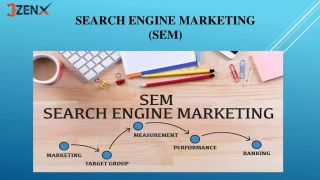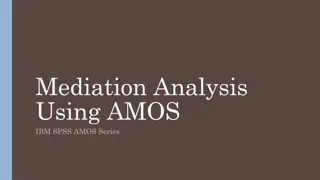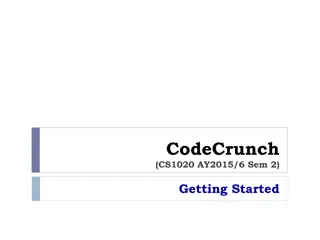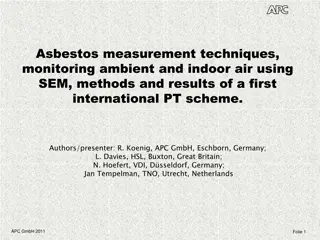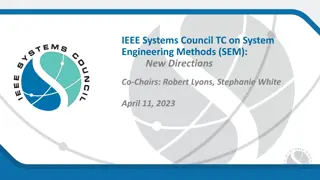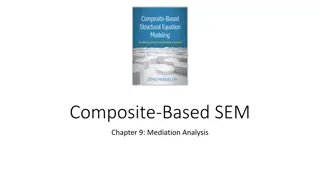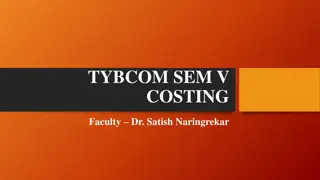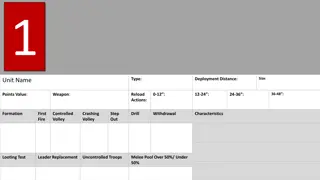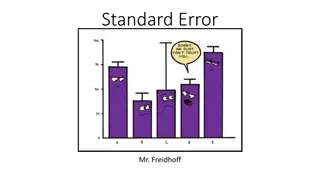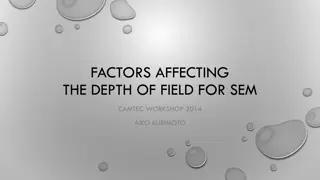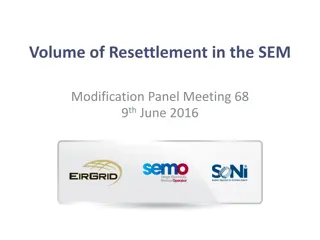
Chromatography: Techniques, Advantages, and Applications - Part 1
Explore the world of chromatography, a group of techniques for separating and identifying components. Learn about the principles, methodologies, and development techniques, along with the advantages, disadvantages, and applications of chromatography. Delve into the history of chromatography, its various forms, and understand the importance of partition and adsorption chromatography. Discover the fascinating world of paper chromatography and how it plays a crucial role in separating components based on partition coefficients.
Download Presentation

Please find below an Image/Link to download the presentation.
The content on the website is provided AS IS for your information and personal use only. It may not be sold, licensed, or shared on other websites without obtaining consent from the author. If you encounter any issues during the download, it is possible that the publisher has removed the file from their server.
You are allowed to download the files provided on this website for personal or commercial use, subject to the condition that they are used lawfully. All files are the property of their respective owners.
The content on the website is provided AS IS for your information and personal use only. It may not be sold, licensed, or shared on other websites without obtaining consent from the author.
E N D
Presentation Transcript
BP701T. INSTRUMENTAL METHODS OF ANALYSIS (Theory) Unit 3 Syllabus Paper chromatography Introduction, methodology, development techniques, advantages, disadvantages and applications PART-1 Dr. NISHA SHARMA, ASSOCIATE PROFESSOR, C.S.J.M. UNIVERSITY, KANPUR 1
CHROMATOGRAPHY Chromatography: Greek: Chroma color Graphein: writing M. Tsvet: Russian botanist: Father of Chrom. Chromatography: It is Group of techniques for the separation & identification of components from distributing continuously between two phases. One phase-- moving & other --- stationary their mixtures by 2
https://www.slideshare.net/khadeejaikram56/classification-of-chromatography-49733015https://www.slideshare.net/khadeejaikram56/classification-of-chromatography-49733015 3
PRINCIPLES OF CHROMATOGRAPHY Adsorption chromatography- stationary phase Solid & mobile phase ---liquid or gaseous separation adsorption/affinity for adsorbent based on Partition Chromatography: stationary phase Liquid & mobile phase -- liquid or gaseous- separation based on partition 4
Principle of Separation Partition The components in a mixture get distributed in two liquid phases because of difference in partition coefficient Liquid-Liquid partition: Liquid is held in place by one physical adsorption (Paper chromatography) Liquid bonded phase column: liquid is attached by chemical bonding, stable packing, insoluble in mobile phase (HPLC) 5
PAPER CHROMATOGRAPHY Introduction : Developed by AH Gorden AJP Martin. (1941), For separation of amino acids AJP Martin & RYL Synge : Shared Nobel prize in 1952 Paper is used as support/ adsorbent Partition plays imp. Role in separation of components than adsorption Because: Cellulose fibers have film of moisture surrounding them in air dried state also 6
PAPER CHROMATOGRAPHY Movement of components on paper- depends on amt. & nature of stationary phase compared with the amt. of mobile phase in same part of paper & on partition coefficient of components It offers means of tentative identification of components Factors Responsible : Temp., Stationary phase, Size of spot, Quality of paper, equilibrium times 7
PAPER CHROMATOGRAPHY To eliminate or to minimize the effect of variables, Rf values are related to std. subst. Eg: Rx= Dist. sub. moves from origin / Dist. reference sub. moves from origin Where x is reference compound Rf values= Dist. travelled by component / Dist. travelled by solvent front 8
Methodology Basic apparatus required Closed chamber: to avoid loss of mobile phase 9

